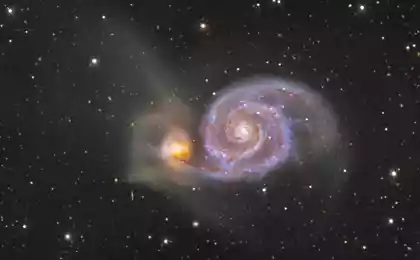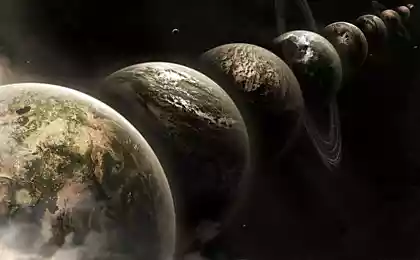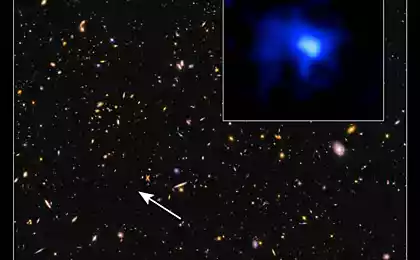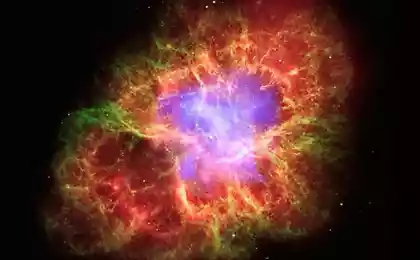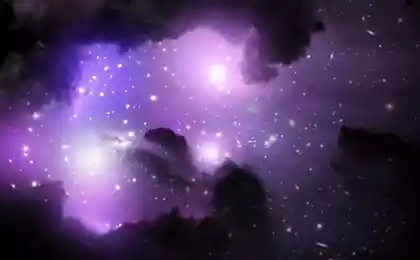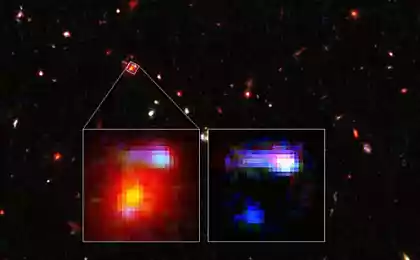680
At the edge of the universe discovered uncharacteristically quickly formed galaxies
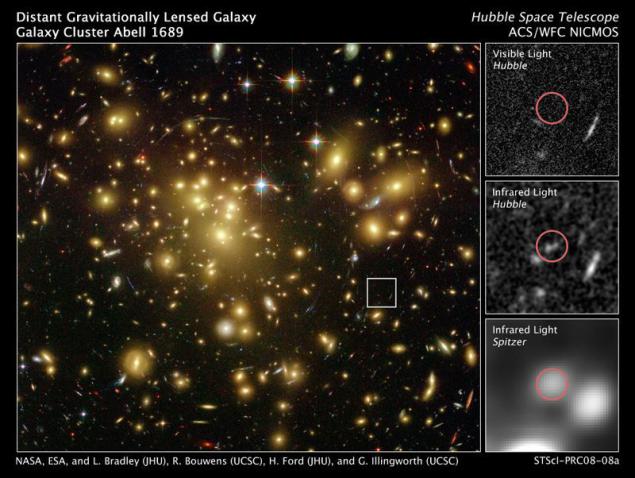
Photo galaxy A1689-zD1, obtained by adding images at different wavelengths. Photo: NASA; ESA; L. Bradley (Johns Hopkins University); R. Bouwens (University of California, Santa Cruz); H. Ford (Johns Hopkins University); and G. Illingworth (University of California, Santa Cruz) i>
Scientists from the University of Copenhagen have discovered one of the oldest galaxies A1689-zD1, whose age is 12.8 billion years old. This means that it was formed after only 700 million years after the big bang. However, the composition of the galaxy is not the same one that scientists expect to meet her.
So far the scientists were able to look through the gravitational lens effect - the light from the galaxy focused gravity of a massive galaxy cluster Abell 1689, located at a distance of 2.2 billion light-years away in the constellation Virgo. Due to this the light from the galaxy has been strengthened ninefold, which allowed her to consider a telescope.
The data obtained are surprised scientists. In early galaxies formed should not be elements with large mass numbers. These elements are formed gradually in the evolution of stars, and are found in abundance in the later formations. But galaxy A1689-zD1 rich in heavy metals and it revealed about the same ratio of dust and gas as our Milky Way. It turns out that star formation in this galaxy went unusually quickly.
Endless Universe throws scientists astrophysicists endless questions. The recently discovered very old quasar (a massive black hole surrounded by a disk of stellar matter) that all calculations should not have been formed so quickly.
Source: geektimes.ru/post/246662/


